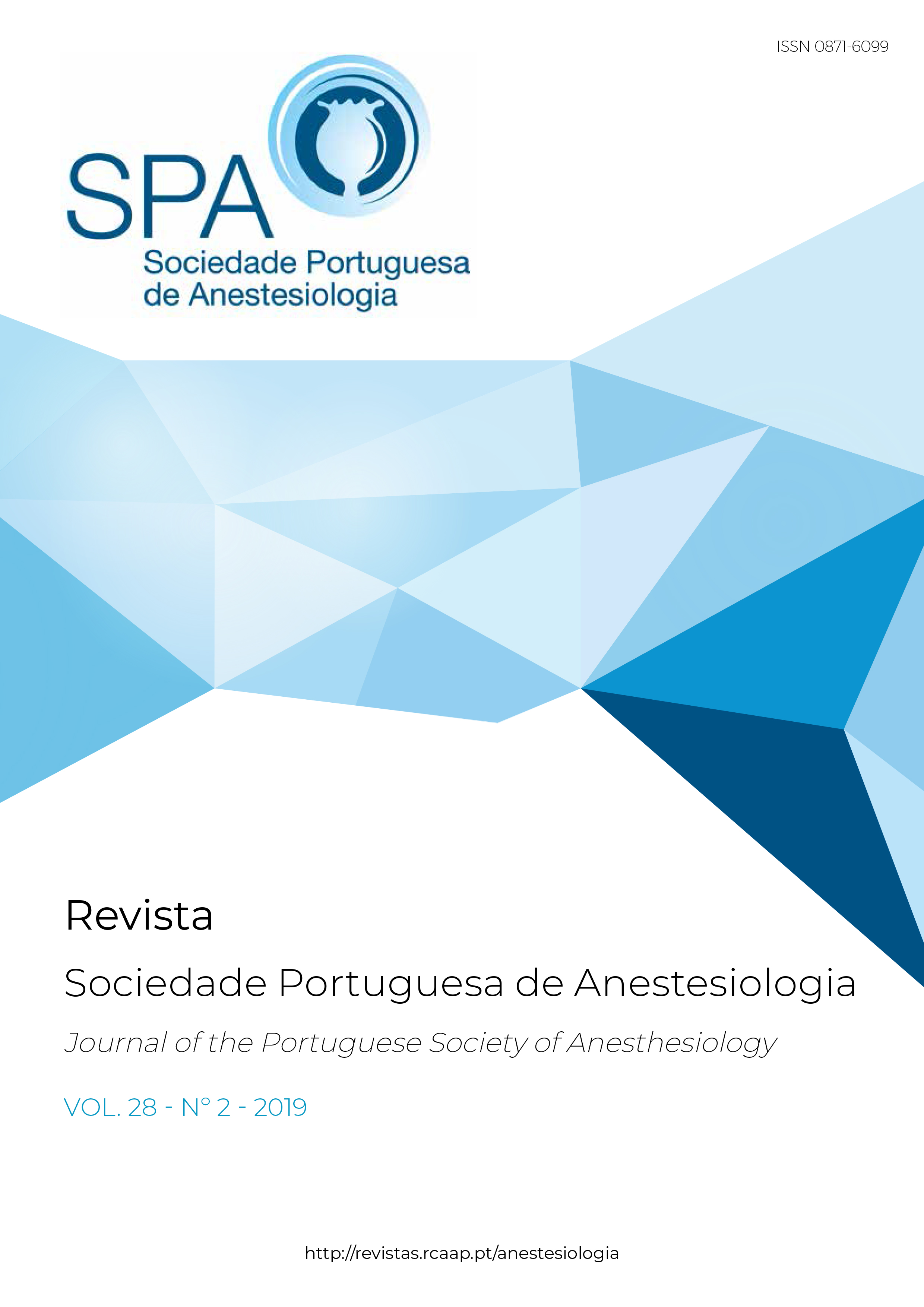Use of RUSH Protocol in the Differential Diagnosis of the Patient in Shock
DOI:
https://doi.org/10.25751/rspa.16135Keywords:
Aged; Anaphylaxis; Clinical Protocols; Diagnosis, Differential; Geriatric Assessment; Shock/diagnostic imaging; Wounds and InjuriesAbstract
Trauma geriatric patients have become increasingly common and assessment of these patients presents a unique challenge. In trauma, massive hemorrhage is the main cause of preventable death. We describe a case of an unexpected severe anaphylactic shock in a fisherman victim of a shipwreck. The patient presented in the emergency room with his thigh sliced through with a broken wooden oar, hemodynamically stable. In the operating room to avoid the platelet dysfunction induced by aspirin, a platelet concentrate was administered. 30 minutes into surgery the patient became hypotensive and vasopressor support was initiated with transitory response. RUSH examination excluded hypovolemia, cardiac dysfunction or pneumothorax. A generalized erythema was found and treatment for anaphylaxis was initiated. Anaphylactic shock is rare potentially life-threatening reaction and in anesthetized patients
is recognition presents a challenge.Although hemorrhage is the main cause of death in trauma we must be prepared to exclude other causes of shock.
Downloads
References
2. ATLS Subcommittee; American College of Surgeons’ Committee on Trauma; International ATLS working group. Advanced trauma life support (ATLS®): the ninth edition. J Trauma Acute Care Surg. 2013;74:1363-6. doi: 10.1097/
TA.0b013e31828b82f5.
3. Reske-Nielsen C, Medzon R. Geriatric Trauma. Emerg Med Clin North Am. 2016;34:483-500. doi: 10.1016/j.emc.2016.04.004.
4. Moranville MP, Mieure KD, Santayana EM. Evaluation and management of shock States: hypovolemic, distributive, and cardiogenic shock. J Pharm Pract. 2011;24:44-60. doi: 10.1177/0897190010388150.
5. Rahmani F, Ebrahimi Bakhtavar H, Shahsavari Nia K, Mohammadi N. Transient Unexplained Shock in 30-year-old Trauma Patient. Emerg. 2014;2:101-3.
6. Blanco P, Aguiar FM, Blaivas M. Rapid Ultrasound in Shock (RUSH) Velocity- Time Integral: A Proposal to Expand the RUSH Protocol. J Ultrasound Med. 2015;34:1691-700. doi: 10.7863/ultra.15.14.08059.
7. Jacobsen RC, Gratton MC. A case of unrecognized prehospital anaphylactic shock. Prehosp Emerg Care. 2011;15:61-6. doi: 10.3109/10903127.2010.519823.
8. Sampson HA, Muñoz-Furlong A, Campbell RL, Adkinson NF Jr, Bock SA, Branum A, et al. Second symposium on the definition and management of anaphylaxis: summary report--Second National Institute of Allergy and Infectious Disease/ Food Allergy and Anaphylaxis Network symposium. J Allergy Clin Immunol.
2006;117:391-7.
9. Kiefel V. Reactions Induced by Platelet Transfusions. Transfus Med Hemother. 2008;35:354-8
Downloads
Published
How to Cite
Issue
Section
License
Articles are freely available to be read, downloaded and shared from the time of publication.
The RSPA reserves the right to commercialize the article as an integral part of the journal (in the preparation of reprints, for example). The author should accompany the submission letter with a declaration of copyright transfer for commercial purposes.
Articles are published under the terms of the Creative Commons Attribution Non-Commercial License (CC BY-NC).
After publication in RSPA, authors are allowed to make their articles available in repositories of their home institutions, as long as they always mention where they were published.


